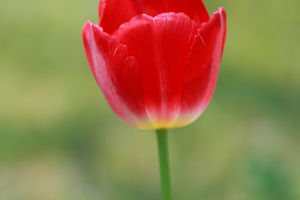Chrysanthemums, commonly known as "mums," are the quintessential autumn flower. Proper care ensures that these vibrant blooms return year after year!
This guide covers the essentials of growing and maintaining chrysanthemums, including how to keep them blooming and how to prepare them for winter.
Overview of Chrysanthemums
The scientific name for chrysanthemums is Chrysanthemum x morifolium (formerly Dendranthema x grandiflora). Known as the Queen of Fall Flowers, they celebrate the season with jewel-toned colors including yellow, lavender, pink, purple, red, bronze, orange, and white. Each bloom consists of tiny flowers called florets, with forms ranging from petite pincushions to giant spiders, offering hundreds of varieties to choose from.
Mums typically grow to a height and width of about 3 feet when pinched regularly during the growing season. Their blooming time is influenced by day length (12 hours or less), at which point buds begin to form. When properly planted and spaced, mums can spread rapidly.
Are Mums Perennial or Annual?
Mums are hardy perennials best planted in early spring. However, many decorative mums sold in garden centers as fall decorations are best treated as annuals and may not survive winter.
Do Mums Come Back Every Year?
Yes, cold-hardy perennials marked to withstand low temperatures will return each year. Early spring is the ideal time to plant mums, allowing them to establish strong roots before winter.
In southern regions, blooming mums can be enjoyed twice a year, while northern climates typically experience blooms only in the fall.
Planting Mums
- Site Selection: Choose a location with full sun, away from trees and large shrubs. Mums thrive in rich, well-draining soil and dislike standing water, which can cause root rot. Enhancing the soil with aged manure or compost is beneficial, as mums are heavy feeders.
- Container Tip: When placing potted mums near porches, be mindful that nighttime light from security or street lights can delay blooming due to insufficient darkness.
When to Plant Mums
Mums should be planted in early spring. Start seeds indoors 6 to 8 weeks before the last frost date.
How to Plant Mums
- Space mums 18 to 36 inches apart, depending on their expected mature size. Good air circulation is essential.
- Plant at the same depth to avoid water accumulation around the base, which can rot the stems.
Growing Mums
- Watering: Regular watering is crucial for growth. The soil should remain moist, and watering without wetting the leaves.
- Fertilizing: Monthly applications of a balanced fertilizer (10-10-10) are recommended, stopping fertilization once flower buds appear.
- Mulching: Spread mulch around the plants to retain moisture and suppress weeds.
- Pinching: To promote bushiness, pinch back stems when new shoots reach 3 to 4 inches in height. This should continue until mid-July when buds form.
Overwintering Mums
In USDA Hardiness Zones 5 and warmer, perennial chrysanthemums can remain outdoors through winter. In colder areas, put them after the first frost, keeping the foliage intact until spring. Water the roots regularly and gradually introduce the plants to light in spring.
Dividing Mums
Every 2 to 3 years, divide mums in spring when new growth appears. Remove the old central portion and cut the remaining plant into sections, ensuring each has good roots and shoots before replanting.
Types of Mums
Mums are categorized into 13 classes based on flower form and petal shape, including:
- Irregular Incurve: Giant blooms, e.g., ‘Bola de Oro’ (gold)
- Reflect: Very large to medium blooms, e.g., ‘Pretty Polly’ (purple with pink reverses)
- Regular Incurve: Ball-shaped, e.g., ‘George Couchman’ (bronze)
- Decorative: Flattened, e.g., ‘Coral Charm’ (salmon)
- Pompom: Ball-shaped, e.g., ‘Kevin Mandarin’ (deep orange)
- Spider: Varying florets, e.g., ‘Lava’ (yellow with red tips)
Extra-Hardy Mums
Certain varieties, such as ‘Betty Lou’ and ‘Burnt Copper,’ can survive in frigid climates.
Harvesting
Chrysanthemums should be cut for arrangements when nearly or fully open. Remove any lower leaves that would be submerged in water to prevent rot. Change the water every couple of days for optimal vase life, which lasts 7 to 10 days.
Wit and Wisdom
The chrysanthemum has historical significance, being used as a culinary herb in ancient China. The name is derived from Greek, meaning "golden flower." Traditionally, a single petal is thought to enhance longevity, and the mum is recognized as the birth flower for November.
Pests and Diseases
Common diseases affecting chrysanthemums include aster yellows, powdery mildew, and various root diseases. Pests such as aphids and spider mites can also pose threats to healthy growth.
5 Tips To Grow Mums || How To Grow Mums || Easy To Grow Flowers
Video by She's A Mad Gardener


